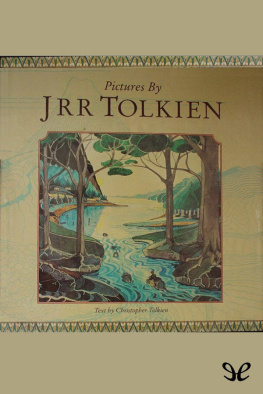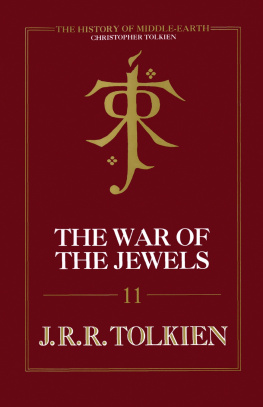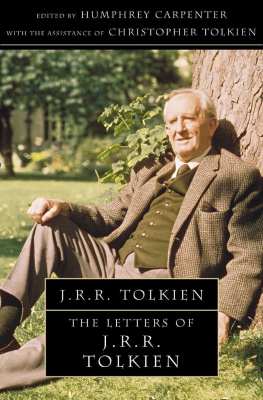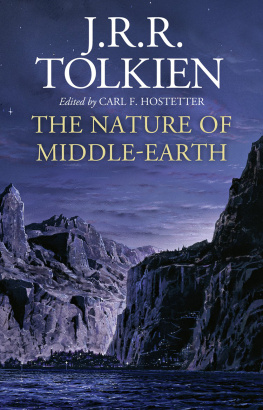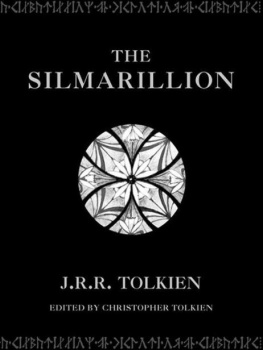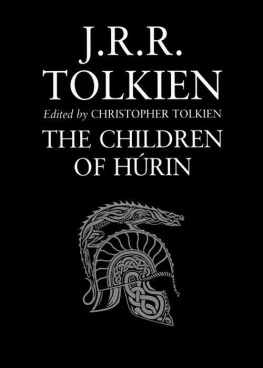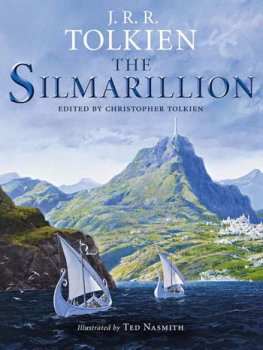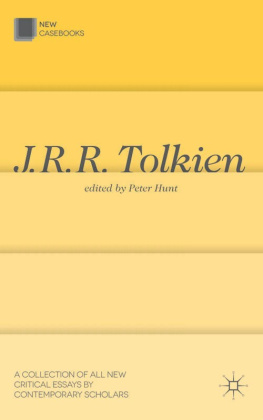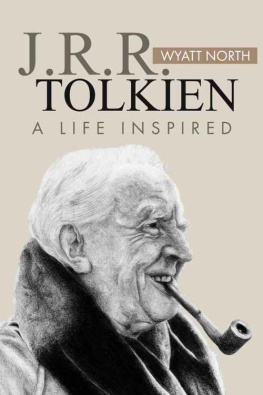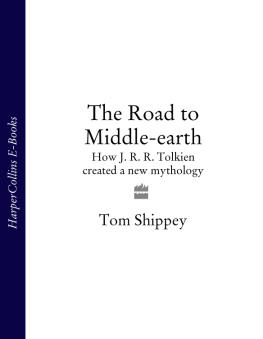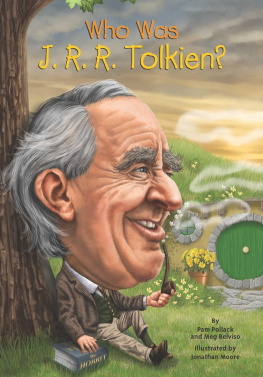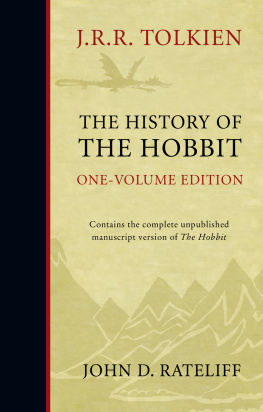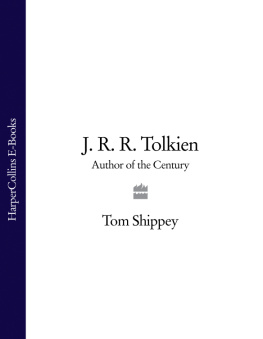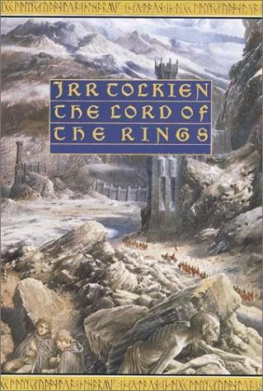Pictures by J. R. R. Tolkien brings together a wide array of paintings, sketches and pictures by J. R. R. Tolkien.
This collection of pictures, with a revised Notes text by Christopher Tolkien, provides an insight into Tolkiens visual conception of many of the places and characters familiar to readers of such books as The Hobbit, The Lord of the Rings and The Silmarillion. Examples of his art range from delicate watercolours depicting Rivendell, the Forest of Lothlrien, Smaug and Old Man Willow to drawings and sketches of Moira Gate and Minas Tirith.

J. R. R. Tolkien
Pictures by J. R. R. Tolkien
ePub r1.0
Titivillus 06.01.15
J. R. R. Tolkien, 1979
Ilustrations: J. R. R. Tolkien
Editor: Christopher Tolkien
Digital Editor: Titivillus
ePub base r1.2
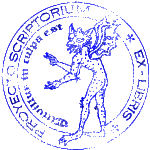
FOREWORD
The primary purpose of this book is to collect together all the pictures (paintings, drawings, designs) by J. R. R. Tolkien which were published in a series of six Calendars from 1973 to 1979, with a gap in 1975.
The first of these Calendars was published in America by Ballantine Books, and while this contained the five paintings that were published in The Hobbit it also included some hitherto unknown pictures to illustrate The Lord of the Rings (in this book nos. 21, 22, 24, and 30) and a sketch for a painting of the death of Smaug the Dragon over the flames of Lake Town (19).
In 1974 began the series of Calendars published by George Allen and Unwin; and this one also was prepared during my fathers lifetime. It contained many of the same pictures as that of 1973, but also a further illustration to The Lord of the Rings (25), the painting of Taniquetil (31) an illustration to The Silmarillion done some forty years before the posthumous publication of the book and a painting (37) which though entitled Fangorn Forest is in fact quite certainly of a scene in The Silmarillion.
After my fathers death Mr Rayner Unwin, Chairman of Allen and Unwin, proposed to me that we should continue the series of Calendars, and we collaborated closely in the selection and presentation of pictures for those of 1976-1979. For The Hobbit Calendar 1976 the five paintings published in The Hobbit were again reproduced, but for the remaining seven months Mr H. E. Riddett was invited to colour the pen and ink pictures: and since then these coloured versions have appeared elsewhere.
For The Lord of the Rings Calendar 1977 it seemed to us that a precedent had been set by my fathers approval of the publication of the unfinished sketch of The Death of Smaug in the Calendars for 1973 and 1974, and in addition to finished illustrations, most of which had appeared previously, we included unfinished sketches and rapid vignettes of great interest as an indication of the authors conception of certain places, as Helms Deep, Orthanc, and Cirith Ungol (26-28). The nature of some of these pictures, and most especially the burnt leaves from the Book of Mazarbul (23), seemed to call for an explanatory comment, and to this Calendar (and the subsequent ones) I contributed notes, some of which reappear in this book.
The Silmarillion Calendar 1978 was mainly illustrated by paintings and drawings done in the late 1920s, when The Silmarillion was still young (only two of these, 31 and 37, had appeared previously), and the drawings were coloured by Mr Riddett (34-36). Also included were three examples of Elvish script, and the heraldic devices borne by figures of the First Age, the Age of The Silmarillion.
The J. R. R. Tolkien Calendar 1979, the last of the series, was also largely composed of previously unpublished paintings and designs, and included four further illustrations to The Hobbit (3, 11, 13, 18, the first of these coloured by Mr Riddett), together with a coloured version of The Hall at Bag-End (20). It showed examples of formal or emblematic dragons, trees, and flowers, presented in decorative arrangements that in some cases combine elements from widely separated times.
As I have said, this book was conceived as a collection of all the pictures that appeared in the six Calendars: but various considerations led us somewhat to extend its scope. In the first place, it seemed desirable to include the original pen and ink illustrations published in The Hobbit, facing the coloured versions that Mr Riddett made for the Calendars (2, 7, 8, 10, 12, 15, 16, 20); and this naturally led to the inclusion of the originals of the unpublished pictures coloured by Mr Riddett - these originals (3, 34-36) here appearing for the first time.
In the second place, a collection of all the pictures from the Calendars necessarily constitutes a fairly complete record of my fathers published work (since the majority of them first appeared in the Calendars, while the Calendars included almost everything that had been published previously - the chief exception being the illustrations of The Father Christmas Letters). I have therefore more nearly approached completeness by the inclusion of a few things that did not appear in the Calendars: the pen and ink drawing of Hobbiton (1), the Doors of Durin (22), Mirkwood (37), and the tree on the cover of the first paperback edition of Tree and Leaf (41). The illustrations of The Father Christmas Letters have not been repealed, with the exception of the 1928 picture of the Polar Bear fallen to the foot of the stairs in Father Christmas house (39), which was used in the 1979 Calendar.
These enlargements of scope are however very minor. The book remains closely related to the Calendars, which were limited (with a few exceptions among the designs in that of 1979) to pictures illustrating The Hobbit, The Lord of the Rings, and The Silmarillion; and the range of my fathers pictorial art, especially that of his earlier years, is by no means fully represented here.
Christopher Tolkien

1. The Hill: Hobbiton-across-the-Water
The drawing of Hobbiton was the frontispiece to the original impression of The Hobbit, 1937, which had no coloured pictures, and it has not been published since. The painting appeared as frontispiece to the second English impression of the same year, and in the first American edition, 1938. It was reproduced in The J. R. R. Tolkien Calendars 1973 and 1974, and in The Hobbit Calendar 1976.
There are only very slight differences between the two renderings, most notably in the windows of the mill and in the words on the signpost, which in the drawing directs the traveller to Bag-End but in the painting to the Hill.
2. The Trolls
The original was published in the first impression of

